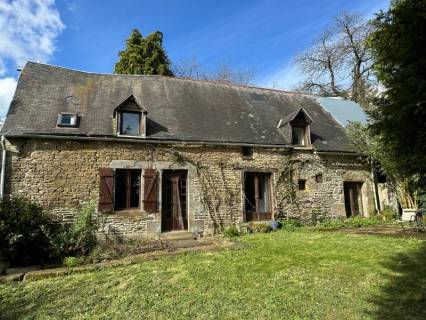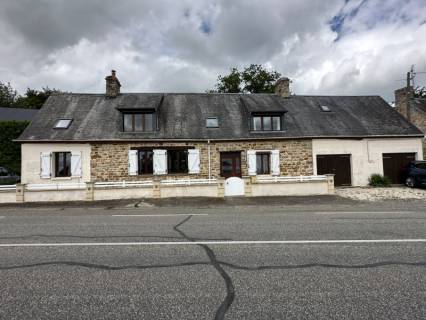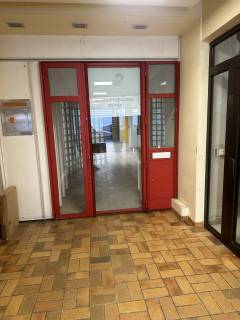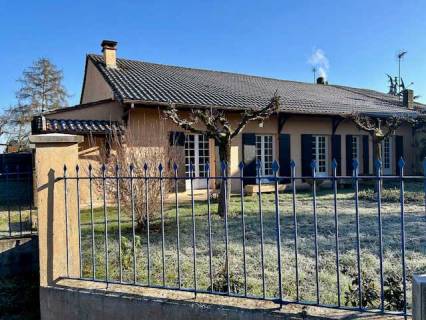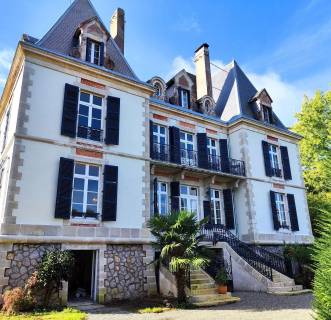Jul 062021
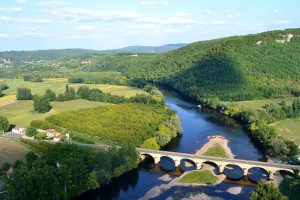 Of all of France, the one area the British have a special affection for is the Dordogne, thanks to its quintessential French lifestyle, with beautiful rolling countryside, great sense of history and heritage, beautiful villages and excellent food.
Of all of France, the one area the British have a special affection for is the Dordogne, thanks to its quintessential French lifestyle, with beautiful rolling countryside, great sense of history and heritage, beautiful villages and excellent food.
Formerly known as Perigord, Dordogne is made up of four distinct areas. To the north lies the forested Perigord Vert, in the centre is the limestone Perigord Blanc, with wide valleys and meadows. In the southwest, the Perigord Pourpre is the wine region which surrounds Bergerac. The South-East part is called the Perigord Noir, so-called for the local woods of oak and pine.
According to French statistics authority INSEE, there are over 7,000 British residents in the Dordogne, making it the second most popular destination after Paris. Most have settled in the areas around Eymet, in the south-west, and Riberac in the west.
Many of these residents will belong to the Facebook group, Living in the Dordogne – Perigord, a platform for English speakers who live in or who are thinking of moving to the Dordogne, to exchange information and advice. Its members enthuse about the department’s beautiful towns and villages, excellent air and rail connections, and wonderful food and wine.
Let’s look at these in more detail.
Beautiful Towns and Villages
 One of the main attractions is just how picturesque the Dordogne is, boasting ten of the ‘Most Beautiful Villages in France’, which, in alphabetical order, are: Belvès, Beynac-et-Cazenac, Castelnaud-la-Chapelle, Domme, La Roque-Gageac, Limeuil, Monpazier, St-Amand-de-Coly, St-Jean-de-Côle and Saint Léon-sur-Vézère. In addition, Périgueux, Bergerac and Sarlat are all categorised as ‘Towns of Art and History’.
One of the main attractions is just how picturesque the Dordogne is, boasting ten of the ‘Most Beautiful Villages in France’, which, in alphabetical order, are: Belvès, Beynac-et-Cazenac, Castelnaud-la-Chapelle, Domme, La Roque-Gageac, Limeuil, Monpazier, St-Amand-de-Coly, St-Jean-de-Côle and Saint Léon-sur-Vézère. In addition, Périgueux, Bergerac and Sarlat are all categorised as ‘Towns of Art and History’.
Gite-owners Vanessa Howard and her partner William, who moved from Suffolk in 2016, chose the village of Mialet, in the north of the Dordogne, to create their two-bedroom gite Beaux Souvenirs (https://www.yourfrenchstay.com/), attracted by the lovely scenery and friendly locals.
‘I like that we live in the heart of the Perigord-Limousin country park so we have loads of walks surrounding our village,’ says Vanessa. ‘I often go for walks on my own and feel completely safe. I love the fact everyone speaks to you, even kids on bikes pass by saying ‘Bonjour Madame’ – you wouldn’t get that in the UK.’
Great Connections
For obvious practical reasons, it helps that the Dordogne is well connected, with access to two local international airports, Bergerac and Brive, as well as Bordeaux International airport to the west in Gironde and Limoges in the Haut-Vienne. The Dordogne is reasonably accessible by high-speed train, too, with stations at Périgueux, Bergerac, Sarlat and Brive, accessible from Bordeaux, Paris, Lyon and Toulouse.
Wonderful Food and Wine
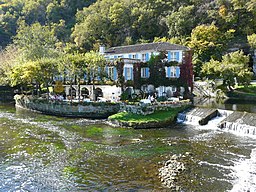
‘Don’t get me going on food’, says Vanessa. ‘The North Dordogne has to be the best place for foodies, it’s the home of foie gras, chestnuts, Perigord black truffles, cepe mushrooms, and just over the borders to the Charente and Haute Vienne we have the Limousin beef, madeleine cakes and perfumed Charente Melons.’
For its spectacular views, her favourite restaurant is the Michelin-starred Le Moulin de L’Abbeye in the attractive town of Brantome, which itself is sometimes referred to as the Venice of the Dordogne. Other Facebook recommendations include Dix in Sainte-Alvere and La Terrasses des Chateaux at Beynac-et-Cazenac.
Leisure Activities
Dordogne boasts over thirty parks and gardens, offering no end of leisure activities, from walking, cycling and horse-riding, to canoeing, often considered one of the best ways to admire the department’s medieval towns and châteaux. There’s also zip-wiring and treetop adventure courses in one of Dordogne’s many forests.
A Sense of History
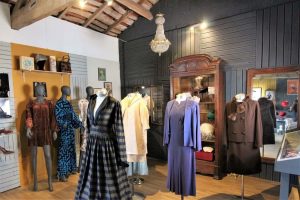 There are said to be some 1000 chateaux dotted on hills and overlooking the River Dordogne, of which some of the best known are the Château de Castelnau-Bretenoux, which sits high on a rocky plateau with incredible views, the Château de Rocamadour, with breathtaking views over the Alzou Valley, and the beautifully preserved Château de Beynac, with its Great Hall of State and 15th century frescoes.
There are said to be some 1000 chateaux dotted on hills and overlooking the River Dordogne, of which some of the best known are the Château de Castelnau-Bretenoux, which sits high on a rocky plateau with incredible views, the Château de Rocamadour, with breathtaking views over the Alzou Valley, and the beautifully preserved Château de Beynac, with its Great Hall of State and 15th century frescoes.
In addition, the town of Sarlat-la-Canéda has the highest density of historic monuments of any town in France, while architectural remains from the Roman Empire can still be seen throughout its capital Périgueux. Stepping even further back in time, the famous Lascaux caves, discovered in 1940, contain fascinating Paleolithic paintings, and are a huge draw.
History is an important attraction for Vanessa and William, who have created their very own on-site Fashion Museum as a bonus for their guests. ‘We love history and are completely immersed in it from prehistoric caves and paintings to Roman villas, Medieval villages, Renaissance castles to WWII relics,’ says Vanessa. ‘We also have a passion for antiques and every week there are car boot sales, plus we have antique centres, brocante fairs and Trocs, or secondhand centres’.
Attractive Property Prices
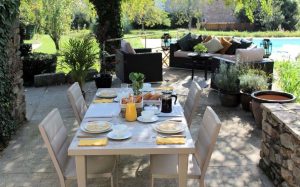 It is still possible to find relative bargains in the Dordogne, with house prices being more reasonable in the north, which is where Vanessa and William settled. ‘We wanted a home where we could put our personal touch on it,’ says Vanessa. ‘A place with lots of character, with amenities close by, including the all-important village bakery.’
It is still possible to find relative bargains in the Dordogne, with house prices being more reasonable in the north, which is where Vanessa and William settled. ‘We wanted a home where we could put our personal touch on it,’ says Vanessa. ‘A place with lots of character, with amenities close by, including the all-important village bakery.’
They ended up buying a former coach house with enough space for two gites, with an additional building for their Fashion Museum, as well as William’s growing assortment of all things Napoleonic and Tin-Tin.
‘There is a lot of competition in the gite world,’ continues Vanessa. ‘We realised that we would have to stand out with a real point of difference. Thus, we developed our fashion museum, a perfect place for us to showcase a selection of our vintage treasures.’
From a tranquil town house in Riberac to a three-bedroom stone house near Eymet and a five-bedroom period house in Bergerac, it’s still possible to find properties for less than £150,000 (or €175,000) in the Dordogne. At the higher scale, a 17th property set in a hectare of private land in Montignac could be yours for £770,000 (or €900,000) or a character five-bedroom stone property close to Verteillac and Riberac is on the market for £460,000 (€580,000).
‘Living in the Dordogne is very much what you make it,’ concludes Vanessa, ‘but speaking French is a must to integrate into the community and to get by in day to day life. On the positive, it’s extremely beautiful, it’s a safe place to live, with very little traffic, fab weather, a laid back lifestyle, amazing food and cheap property.’
So if you’ve been considering buying your own home or creating a gite in the Dordogne, why not make this the year to take the plunge? The chances are, you’ll never look back.

